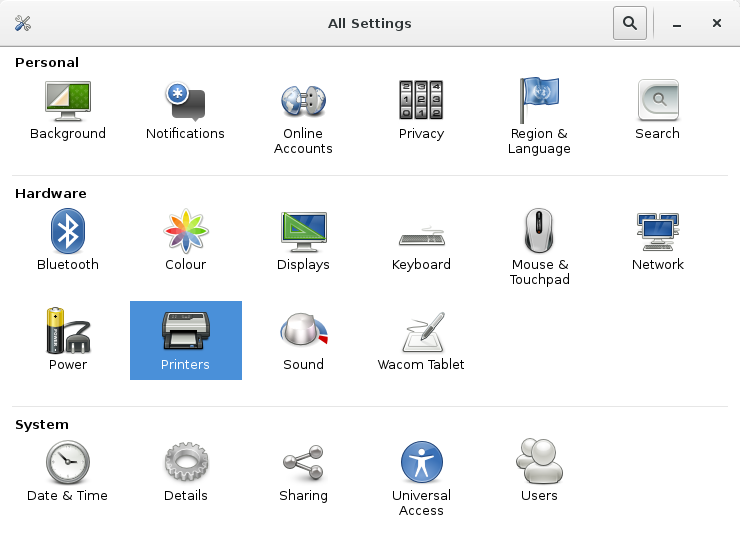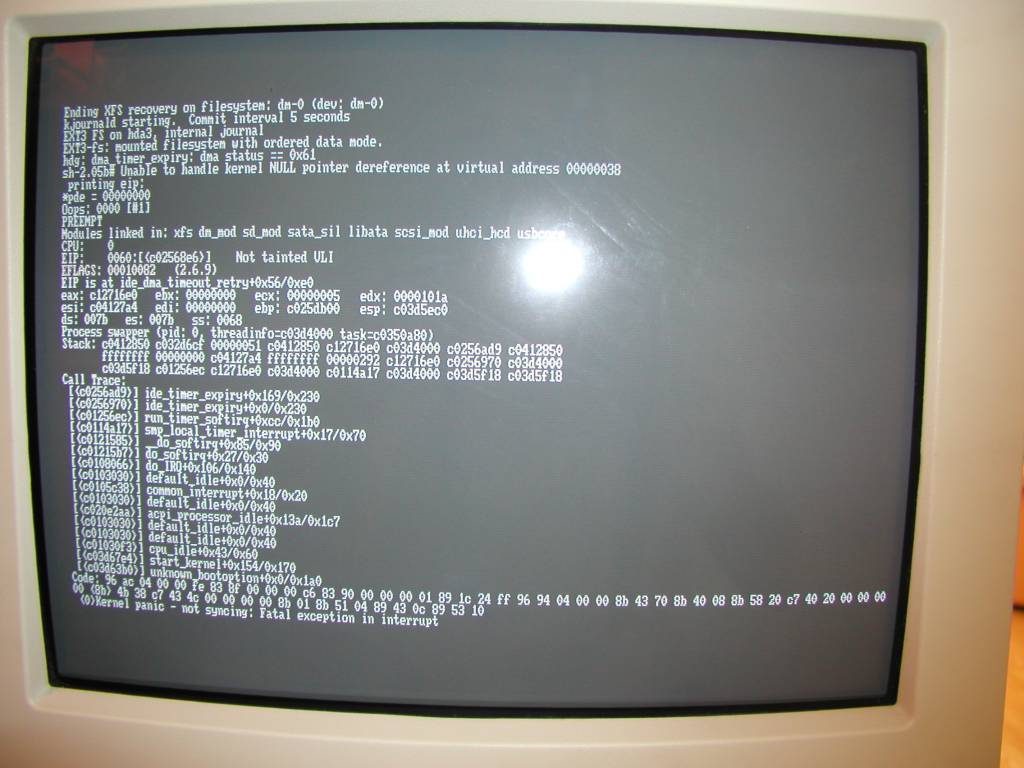When you use GDB, you can see that it has a complete control over your
application process. Hit Ctrl-C while the
application is running and the process execution stops, and GDB shows
its current location, stack trace, etc.
But how can it do it?
How they don't work?
Let's start first with how it doesn't work. It doesn't simulate the
execution, by reading and interpreting the binary instructions. It
could, and that would work (that the way valgrind memory debugger
works), but that would be too slow. Valgrind slows the application
1000x down, GDB doesn't. That's also the way virtual machines like
Qemu work.
So, what's the trick? Black magic! ... no, that would be too easy.
Another guess? ... ? Hacking! yes, there's a good deal of that, plus
help from the OS kernel.
First of all, there's one thing to know about Linux processes:
parent processes can get additional information about their
children, in particular the ability to ptrace them. And, you can
guess, the debugger is the parent of the debuggee process (or it
becomes, processes can adopt a child in Linux :-).
Linux Ptrace API
Linux ptrace API
allows a (debugger) process to access low-level information about
another process (the debuggee). In particular, the debugger can:
- read and write the debuggee's memory: PTRACE_PEEKTEXT,
PTRACE_PEEKUSER, PTRACE_POKE...
- read and write the debuggee's CPU registers: PTRACE_GETREGSET,
PTRACE_SETREGS,
- be notified of system events: PTRACE_O_TRACEEXEC,
PTRACE_O_TRACECLONE, PTRACE_O_EXITKILL, PTRACE_SYSCALL (you
can recognize the exec syscall, clone, exit, and all the other
syscalls)
- control its execution: PTRACE_SINGLESTEP, PTRACE_KILL,
PTRACE_INTERRUPT, PTRACE_CONT (notice the CPU single-stepping
here)
- alter its signal handling: PTRACE_GETSIGINFO, PTRACE_SETSIGINFO
How is Ptrace implemented?
Ptrace implementation is outside of the scope of this post, but I
don't want to move the black-box one step above, so let me explain
quickly how it works (I'm no kernel expert, please correct me if I'm
wrong and excuse me if I simplify too much :-).
Ptrace
is part of Linux kernel,
so it has access to all the kernel-level information about the
process:
What about systems without Ptrace?
The explanation above targeted Linux native debugging, but it's valid
for most of the other environments. To get a clue on what GDB asks to
its different targets, you can take a look at the operations of its
target stack.
In this target interface, you can see all of the high-level operations
required for C debugging:
struct target_ops
{
struct target_ops *beneath; /* To the target under this one. */
const char *to_shortname; /* Name this target type */
const char *to_longname; /* Name for printing */
const char *to_doc; /* Documentation. Does not include trailing
newline, and starts with a one-line descrip-
tion (probably similar to to_longname). */
void (*to_attach) (struct target_ops *ops, const char *, int);
void (*to_fetch_registers) (struct target_ops *, struct regcache *, int);
void (*to_store_registers) (struct target_ops *, struct regcache *, int);
int (*to_insert_breakpoint) (struct target_ops *, struct gdbarch *,
struct bp_target_info *);
int (*to_insert_watchpoint) (struct target_ops *,
CORE_ADDR, int, int, struct expression *);
...
}
The generic part of GDB calls these functions, and the target-specific
parts implement them. It is (conceptually) shaped as a stack, or a
pyramid: the top of the stack is quite generic, for instance:
The
remote
target is interesting, as it splits the execution stack between two
"computers", through a communication protocol (TCP/IP, serial port).
The remote part can be gdbserver, running in another Linux box. But
it can also be an interface to a hardware-debugging port (JTAG) or a
virtual machine hypervisor (e.g
Qemu), that will play the role of
the kernel+ptrace. Instead of querying the OS kernel structures, the
remote debugger stub will query the hypervisor structures, or directly
the hardware registers of the processor.
For further reading about this remote protocol, Embecosm wrote a
detail guide about the different messages. Gdbserver event-processing loop
is there, and
Qemu gdb-server stub
is also online.
To sum up
We can see here that all the low-level mechanisms required to
implement a debugger are there, provided by this ptrace API:
- Catch the exec syscall and block the start of the execution,
- Query the CPU registers to get the process's current instruction and
stack location,
- Catch for clone/fork events to detect new threads,
- Peek and poke data addresses to read and alter memory variables.
But is that all a debugger does? no, that just the very low level
parts ... It also deals with symbol handling. That's link between the
binary code and the program sources. And one thing is still missing,
maybe the most important one: breakpoints! I'll first explain how
breakpoints work as it's quite interesting and tricky, then I'll come
back on symbol management.
Breakpoints are not part of Ptrace API
As we've seen above, breakpoints are not part of ptrace API
services. But we can alter the memory, and receive the debugee's
signals. You can't see the link? That's because breakpoint
implementation is quite tricky and hacky! Let's examine how to set a
breakpoint at a given address:
- The debugger reads (ptrace peek) the binary instruction stored at
this address, and saves it in its data structures.
- It writes a trapping instruction at this location. This instruction can be a dedicated debugging instruction (INT3/0xCC on x86, ebreak on RISC-V), or any invalid instruction for the given CPU.
- When the debuggee reaches this invalid instruction (or, put more
correctly, the CPU, configured with the debuggee memory context),
it won't be able to execute it (because it's an invalid instruction), or it will trap in the kernel fault handler.
- In modern multitask OSes, an invalid instruction doesn't crash the
whole system, but it gives the control back to the OS kernel, by
raising an interruption (or a fault).
- This interruption is translated by Linux into a SIGTRAP signal,
and transmitted to the process ... or to it's parent, as the debugger
asked for.
- The debugger gets the information about the signal, and checks the
value of the debuggee's instruction pointer (i.e., where the trap
occurred). If the IP address is in its breakpoint list, that means
it's a debugger breakpoint (otherwise, it's a fault in the process,
just pass the signal and let it crash).
- Now that the debuggee is stopped at the breakpoint, the debugger
can let its user do what ever s/he wants, until it's time to continue
the execution.
- To continue, the debugger needs to 1/ write the correct instruction
back in the debuggee's memory, 2/ single-step it (continue the
execution for one CPU instruction, with ptrace single-step) and 3/
write the invalid instruction back (so that the execution can stop
again next time). And 4/, let the execution flow normally.
Neat, isn't it? As a side remark, you can notice that this algorithm
will not work if not all the threads are stopped at the same time
(because running threads may pass the breakpoint when the valid
instruction is in place). I won't detail the way GDB guys solved it,
but it's discussed in detail this paper:
Non-stop Multi-threaded Debugging in GDB. Put
briefly, they write the instruction somewhere else in memory, set the
instruction pointer to that location and single-step the
processor. But the problem is that some instruction are
address-related, for example the jumps and conditional jumps ...
Symbol and debug information handling
Now, let's come back to the symbol and debug information handling
aspect. I didn't study that part into details, so I'll only present an
overview.
First of all, can we debug without debug information and symbol
addresses? The answer is yes, as, as we've seen above, all the
low-level commands deal with CPU registers and memory addresses, and
not source-level information. Hence, the link with the sources are
only for the user's convenience. Without debug information, you'll see
your application the way the processor (and the kernel) see it: as
binary (assembly) instructions and memory bits. GDB doesn't need any
further information to translate binary data into CPU instructions:
(gdb) x/10x $pc # heXadecimal representation
0x402c60: 0x56415741 0x54415541 0x55f48949 0x4853fd89
0x402c70: 0x03a8ec81 0x8b480000 0x8b48643e 0x00282504
0x402c80: 0x89480000 0x03982484
(gdb) x/10i $pc # Instruction representation
=> 0x402c60: push %r15
0x402c62: push %r14
0x402c64: push %r13
0x402c66: push %r12
0x402c68: mov %rsi,%r12
0x402c6b: push %rbp
0x402c6c: mov %edi,%ebp
0x402c6e: push %rbx
0x402c6f: sub $0x3a8,%rsp
0x402c76: mov (%rsi),%rdi
Now if we add symbol handling information, GDB can match addresses
with symbol names:
(gdb) $pc
$1 = (void (*)()) 0x402c60 <main>
You can list the symbols of an ELF binary with nm -a $file:
nm -a /usr/lib/debug/usr/bin/ls.debug | grep " main"
0000000000402c60 T main
GDB will also be able to display the stack trace (more on that later),
but with a limited interest:
(gdb) where
#0 write ()
#1 0x0000003d492769e3 in _IO_new_file_write ()
#2 0x0000003d49277e4c in new_do_write ()
#3 _IO_new_do_write ()
#4 0x0000003d49278223 in _IO_new_file_overflow ()
#5 0x00000000004085bb in print_current_files ()
#6 0x000000000040431b in main ()
We've got the PC addresses, the corresponding function, but that's
it. Inside a function, you'll need to debug in assembly!
Now let's add debug information: that's the DWARF standard, gcc -g
option. I'm not very familiar with this standard, but I know it
provides:
- address to line and line to address mapping
- data type definitions, including typedefs and structures
- local variables and function parameters, with their type
Try dwarfdump to see the information embedded in you
binaries. addr2line also uses these information:
$ dwarfdump /usr/lib/debug/usr/bin/ls.debug | grep 402ce4
0x00402ce4 [1289, 0] NS
$ addr2line -e /usr/lib/debug/usr/bin/ls.debug 0x00402ce4
/usr/src/debug/coreutils-8.21/src/ls.c:1289
Many source-level debugging commands will rely on these information,
like the command next, that sets a breakpoint at the address of the
next line, the print command that relies on the types to display the
variables in the right type (char, int, float, instead of
binary/hexadecimal!).
Last words
We've seen many aspects of debugger's internals, so I'll just say a
few words of the last points:
- the stack trace is "unwinded" from the current frame ($sp and
$bp/#fp) upwards, one frame at a time. Functions' name,
parameters and local variables are found in the debug information.
- watchpoints are implemented (if available) with the help of the
processor: write in its registers which addresses should be
monitored, and it will raise an exception when the memory is read or
written. If this support is not available, or if you request more
watchpoints than the processor supports ... then the debugger falls
back to "hand-made" watchpoints: execute the application instruction
by instruction, and check if the current operation touches a
watchpointed address. Yes, that's very slow!
- Reverse debugging can be done this way too, record the effect of
each instruction, and apply it backward for reverse execution.
- Conditional breakpoints are normal breakpoints, except that,
internally, the debugger checks the conditions before giving the
control to the user. If the condition is not matched, the execution
is silently continued.
And play with gdb gdb, or better (way better actually), gdb --pid $(pidof gdb), because two debuggers in the same terminal is insane :-). Another great thing for learning is system debugging:
qemu-system-i386 -gdb tcp::1234
gdb --pid $(pidof qemu-system-i386)
gdb /boot/vmlinuz --exec "target remote localhost:1234"
but I'll keep that for another article!
 (gdb) break *0x972
(gdb) break *0x972


